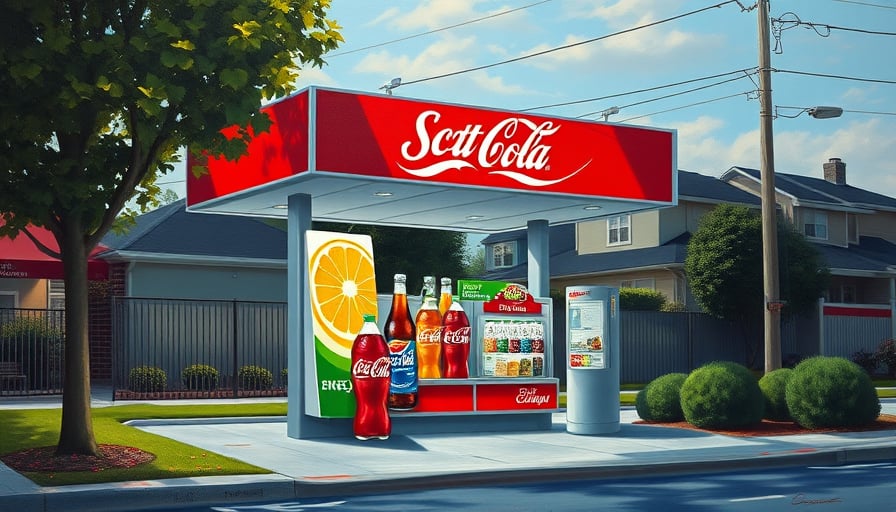PepsiCo’s Dividend Announcement Amid Strategic Shift Toward Integrated Retail and Digital Innovation
PepsiCo Inc. announced a quarterly dividend of $1.4225 per share, a decision that has captured the attention of financial news outlets and market observers alike. The dividend reflects the company’s continued commitment to delivering steady returns to shareholders while pursuing a broader strategy that balances cost‑saving initiatives with opportunities for innovation across its diverse portfolio.
A Cost‑Efficient Pivot in a Changing Consumer Landscape
The dividend declaration follows PepsiCo’s recent trial of combined snack and beverage warehousing—a move designed to streamline logistics, reduce operating expenses, and strengthen its supply‑chain resilience. In an era where consumer preferences shift rapidly, the company’s focus on operational efficiency is both a defensive tactic and a platform for future growth. Analysts note that this initiative aligns with a broader trend in the consumer goods sector, wherein brands are increasingly consolidating distribution networks to accommodate omnichannel demands and to reduce carbon footprints, thereby resonating with environmentally conscious demographics.
Digital Transformation Meets Physical Retail: A New Consumer Experience
PepsiCo’s 2025 playbook, as discussed by industry experts, highlights the company’s ambition to fuse digital transformation with the tactile appeal of physical retail. The integration of data analytics, artificial intelligence, and real‑time inventory management enables PepsiCo to tailor product assortments to localized tastes and to predict seasonal demand spikes with unprecedented accuracy. This precision not only lowers waste but also enhances the in‑store experience, turning grocery aisles into dynamic, data‑driven touchpoints that cater to Gen Z’s preference for personalization and Gen X’s demand for convenience.
The company’s partnership with emerging e‑commerce platforms and the rollout of smart shelf technologies illustrate how physical stores can evolve into experience centers rather than mere transaction points. Consumers increasingly seek immersive interactions—think augmented‑reality product displays or in‑store events that blend brand storytelling with community engagement. By investing in these experiential elements, PepsiCo taps into the cultural movement toward “lifestyle shopping,” where consumers purchase not only goods but also narratives and emotions associated with the brand.
Generational Spending Patterns and Market Opportunities
Generational analysis reveals distinct spending behaviors that shape PepsiCo’s strategic focus. Millennials and Gen Z exhibit a marked preference for brands that champion sustainability, social responsibility, and authenticity. They are more likely to support products that offer transparent sourcing stories and that align with their values. Conversely, Gen X and older consumers prioritize affordability, quality, and familiarity, often gravitating toward established beverage and snack categories.
PepsiCo’s cost‑saving measures position the company to offer competitively priced products without compromising quality—an attractive proposition for price‑sensitive Gen X shoppers. At the same time, the company’s investment in digital and experiential retail signals a commitment to engaging younger cohorts, who are willing to pay a premium for curated, interactive brand experiences.
Forward‑Looking Analysis: Turning Societal Shifts into Market Growth
Sustainability as a Growth Lever The company’s logistics consolidation reduces energy usage and carbon emissions. By publicizing these efforts, PepsiCo can enhance its brand equity among eco‑conscious consumers, opening pathways for premium pricing on “green” product lines.
Data‑Driven Product Innovation Leveraging real‑time sales data across integrated warehouses allows PepsiCo to launch micro‑segments—limited‑edition flavors tailored to regional tastes. This agility can capture the fleeting attention of trend‑driven Gen Z consumers while maintaining steady sales among traditional buyers.
Hybrid Retail Ecosystems Combining brick‑and‑mortar stores with digital platforms creates a seamless shopping journey. PepsiCo can experiment with “click‑and‑collect” models or in‑store kiosks that offer personalized nutrition advice, thereby differentiating itself in a crowded marketplace.
Dividend Stability as a Trust Signal Maintaining a consistent dividend during an era of rapid change reassures long‑term investors, especially institutional clients seeking predictable cash flows. This financial stability can provide capital for further innovation while reinforcing the company’s resilience narrative.
Conclusion
PepsiCo’s dividend announcement, set against the backdrop of strategic cost reductions and a forward‑looking playbook, underscores how consumer‑centric innovation can coexist with disciplined financial stewardship. By aligning operational efficiencies with digital and experiential retail advancements, PepsiCo is poised to capitalize on evolving lifestyle trends, demographic shifts, and cultural movements—turning societal change into tangible business opportunities across the consumer sector.




